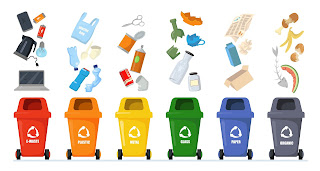Wearable, Washable, and 100% Waste-Free: Is This the Future of Fashion?
Imagine a world where your favorite shirt is fully compostable, your shoes are made from mushrooms, and your closet doesn’t contribute to landfill waste. Sounds like science fiction? Not anymore. In 2025, this vision is fast becoming reality. The fashion industry is shedding its wasteful past and stepping into a new era where clothes are wearable, washable, and 100% waste-free.
This shift isn’t just trendy, it's necessary. With fashion sustainability trends 2025 putting pressure on brands and consumers alike to think eco-first, the future of fashion is being redefined right before our eyes. So, what does this future look like, and how close are we to making it mainstream?
The Waste Problem: Why Fashion Had to Change
Let’s start with the hard truth: the fashion industry is responsible for over 92 million tons of textile waste annually. That’s the equivalent of a garbage truck full of clothes being dumped every second. Yikes.
But 2025 is ushering in real change. Designers, scientists, and eco-conscious consumers are saying “no more” to disposable fashion. The goal? Create garments that don’t end up in landfills, but instead return safely to the earth or can be infinitely reused.
What Does “100% Waste-Free” Actually Mean?
A waste-free garment is one that leaves zero trace behind. That includes the materials, dyes, stitching, packaging even the way it’s produced and shipped.
Here’s how it's done:
Biodegradable fabrics like hemp, organic cotton, bamboo, seaweed fiber, and even mycelium (mushroom-based textile!) are being used to make clothing that breaks down naturally after use.
Closed-loop production systems recycle scraps back into the supply chain, leaving nothing behind.
Waterless dyeing technologies reduce pollution and save billions of gallons of water.
Zero-waste design patterns cut fabric usage so precisely that nothing ends up on the cutting room floor.
Sound revolutionary? It is and it’s already happening.
Brands Leading the Waste-Free Revolution
In 2025, brands are getting bold with sustainability. Some names to watch:
PANGAIA: Known for using bio-based materials and innovative dyeing methods, including colorants made from food waste.
Stella McCartney: A pioneer in sustainable luxury, she continues to push for cruelty-free, circular materials like mushroom leather.
For Days: Offers a “take-back” program for all garments, ensuring every item is reused or recycled.
These brands are aligned with the fashion sustainability trends 2025 movement, proving that style and sustainability can absolutely coexist.
The Role of Technology: Smart, Sustainable Fashion
Tech is playing a huge part in the push toward waste-free fashion. Here are some futuristic (but real) advancements we’re seeing now:
Digital clothing: Virtual outfits for online avatars or social media, reducing the need for physical fast fashion.
AI in design: Optimizes material usage and predicts customer demand, reducing overproduction.
Blockchain traceability: Ensures transparency in sourcing and production, so you know exactly where your clothes come from.
We’re not just wearing clothes anymore we’re wearing data-driven decisions.
What Can You Do as a Consumer?
Even if you’re not designing the next compostable hoodie, you still play a big role. Here’s how:
Buy less, choose better: Invest in timeless, well-made pieces that last.
Support eco-conscious brands: Your money speaks volumes.
Recycle or donate old clothes responsibly.
Wash smart: Use cold water, skip the dryer, and avoid over-washing to extend garment life.
Remember, in the world of sustainable fashion, every small step matters.
So… Is Waste-Free Fashion the Future?
Absolutely. It’s not just a niche, it's becoming the standard. As the world becomes more conscious of the environmental impact of what we wear, fashion is evolving fast. With fashion sustainability trends 2025 paving the way, the future looks cleaner, greener, and smarter.
The best part? We don’t have to choose between looking good and doing good anymore.
Fashion is finally dressing for the future and it looks fantastic. Are you ready to wear the change?



Comments
Post a Comment